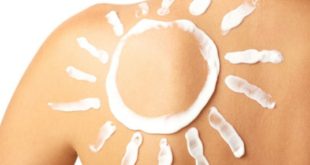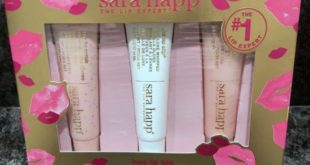
Skincare is Sofie Pavitt’s life—we know it, because throughout our interview with the New York based aesthetician she casually dropped so many skin tips that we couldn’t include them all in her Top Shelf. In her practice, Pavitt has sought to untangle industry hoopla by offering a savvy perspective grounded in science. She’s the kind of facialist who will read your routine for filth before turning it upside down (for the better). Which is why we couldn’t just keep all her advice in an unpublished document, filed away with all the other mysterious inner workings of ITG, either. To do so would deprive you, reader, of the kind of thoughtful skincare guidelines even robust aficionados save as a bookmark. “It’s so hard to understand everything that’s in products, but consumers think they do,” said Pavitt, who calls the phenomenon the “Sephora Effect.” Below, find Pavitt’s five best tips to cut through the noise.
1. Don’t Overdo It
Pavitt’s first commandment of skin? More products means more problems—you’re better off skipping the 10-step routine and simplifying to just what you really need. “I’m always telling people to use fewer products, and they look at me like I’m telling them Santa’s not real,” said Pavitt, whose own routine consists of cleanser, vitamin C, sunscreen, a little acid, a touch of retinol, and that’s it. And she applies the same philosophy to the brands she stocks in her facial studio, too. “I really have to love the brand to stock it. I’m never one to say, ‘Oh, let’s just get it in!’”
2. You’re Probably Overdoing It
Not to give you skin tip déjà vu, but it’s worth driving home: in addition to not using too many products, you also might be using great products too frequently. “People will go buy 10 cult products, and before they know it they’ve got nine acids and have no idea what’s going on with their skin,” explained Pavitt. As an example, she cited a chemical peel client who, following her treatment, used Drunk Elephant’s beloved Babyfacial three days in a row. “She came in again, freaking out, and obviously it was because she did a peel on top of a peel on top of a peel.” Instead of focusing solely on cult products, which tend to be strong, Pavitt thinks you should get comfortable reading a product label and exercising restraint. “Minimize acids to twice a week,” she added—hydration can do the healing and smoothing on the other five days.
3. Be A Skeptical Consumer
While she’s a fan and regular user of several products marketed as “clean,” Pavitt takes any brand that uses fear marketing with a grain of salt. “Clean doesn’t necessarily mean safer. It’s not regulated,” she remarked. Her points took on the familiar cadence of someone who has this argument all the time: “Drugstore products have been tested, and they’re safe. All-natural beauty products are totally unstable—preservatives are there for a reason, to preserve things.” In terms of using essential oils (they’re natural!) to treat acne, Pavitt gave it a big fat N-O. “If you use essential oils on compromised skin, it’s going to go mental. That just doesn’t make sense.” Instead, Pavitt prioritizes science and clinical studies, and emphasizes that words like “clean,” “natural,” and “non-toxic” don’t really mean anything specific at all. “I have a bee in my bonnet about clean beauty,” said Pavitt, “it’s such a weird thing.”
4. Leave The Professional Treatments To The Pros
If you need to get a license in order to perform certain treatments, don’t try cutting any corners—there might be essential safety protocols you’re missing if you try to do them on yourself at home. Pavitt uses microneedling as a prime example of this. “In theory it’s really smart and clever!” she noted. “But people don’t clean them correctly, and infection is so scary. If you roll it through a cystic acne pimple, you’re then rolling that bacteria through the entire face and dermal structure, which is terrifying.” There’s also a second concern: professional microneedling tools are single use, while at-home versions are advertised to be used over and over again. “You should really only use them once, because the needles dull, and the blunt ends end up tearing the skin.” It’s probably more difficult to reverse the damage you might do to your skin with a professional tool (like a microneedle roller) or too-strong treatment (like a pro-grade chemical peel) than it is to treat whatever skin concern you’re currently dealing with. In other words, if it seems too good to be true, it probably is.
5. Keep An Open Mind
Very few skincare rules are set in stone, and that’s because our scientific knowledge is constantly being expanded upon. It’s a truth Pavitt confronted during her recent pregnancy—there’s lots of conflicting information about what skincare you can and can’t use. “Most salicylic acid studies around pregnancy are based on Aspirin use, which is pure salicylic acid,” Pavitt explained. “A lot of people will cite these studies, where they noticed salicylic acid crossing the placental barrier of women who took Aspirin, which were done in the ‘80s.” But that’s just for internal use—more recent studies regarding topical salicylic acid found that barely any was absorbed by the skin, let alone entered the bloodstream or crossed the placental barrier. “I felt very comfortable using salicylic twice a week to keep my pores clean, because I had a lot more oil when I was pregnant,” said Pavitt. If compelling research ever comes out that supports never washing your face, or says that everything we thought we knew about vitamin C is wrong, it’ll do you good to listen up.
Photo via ITG



